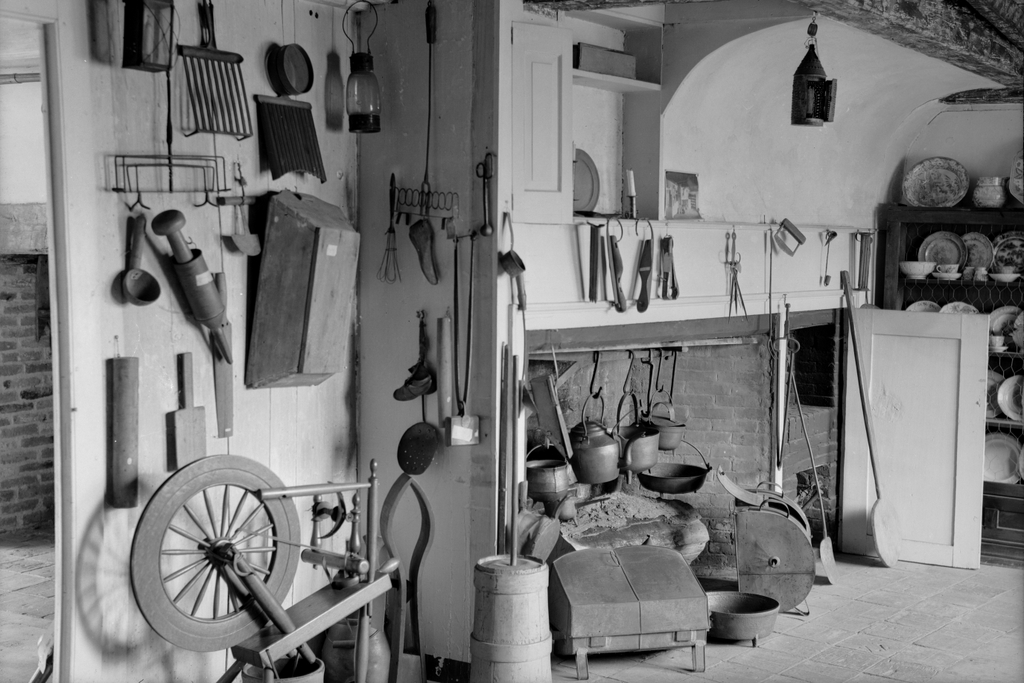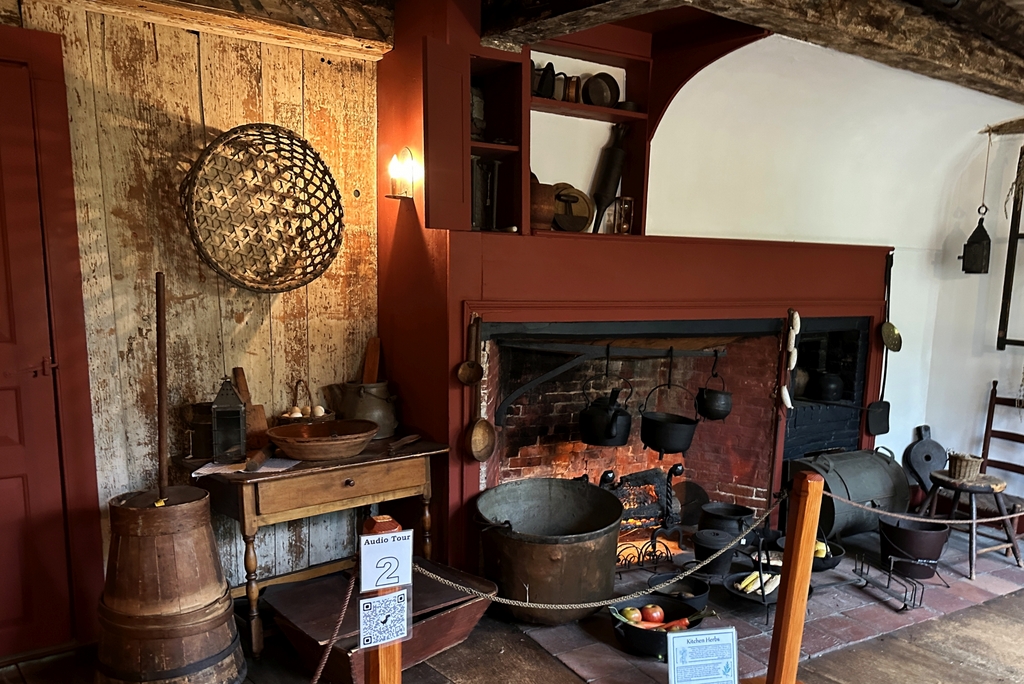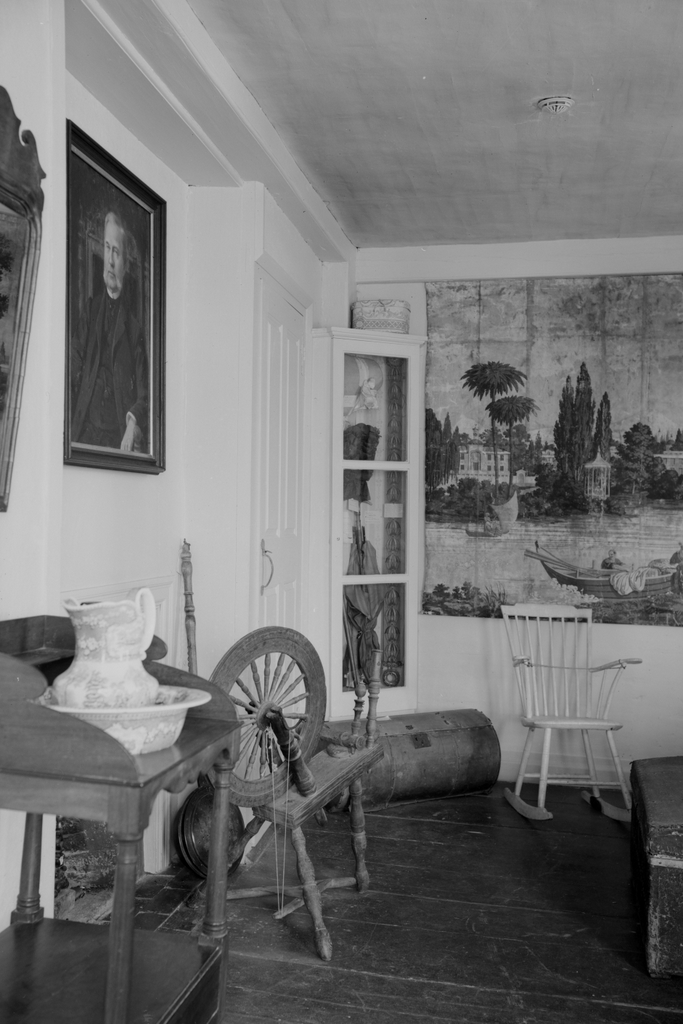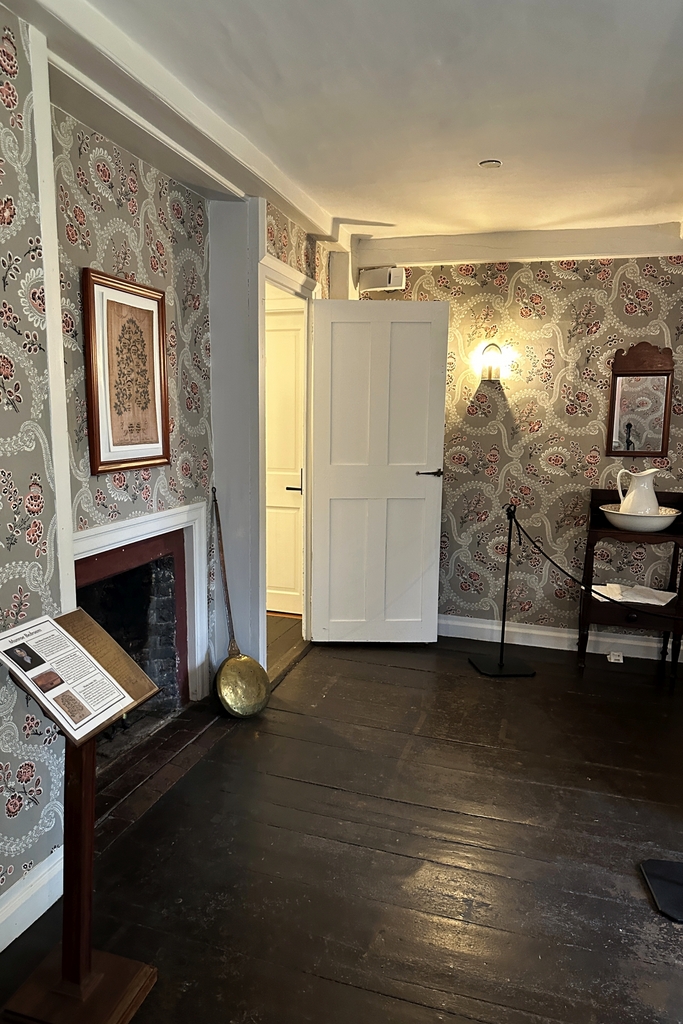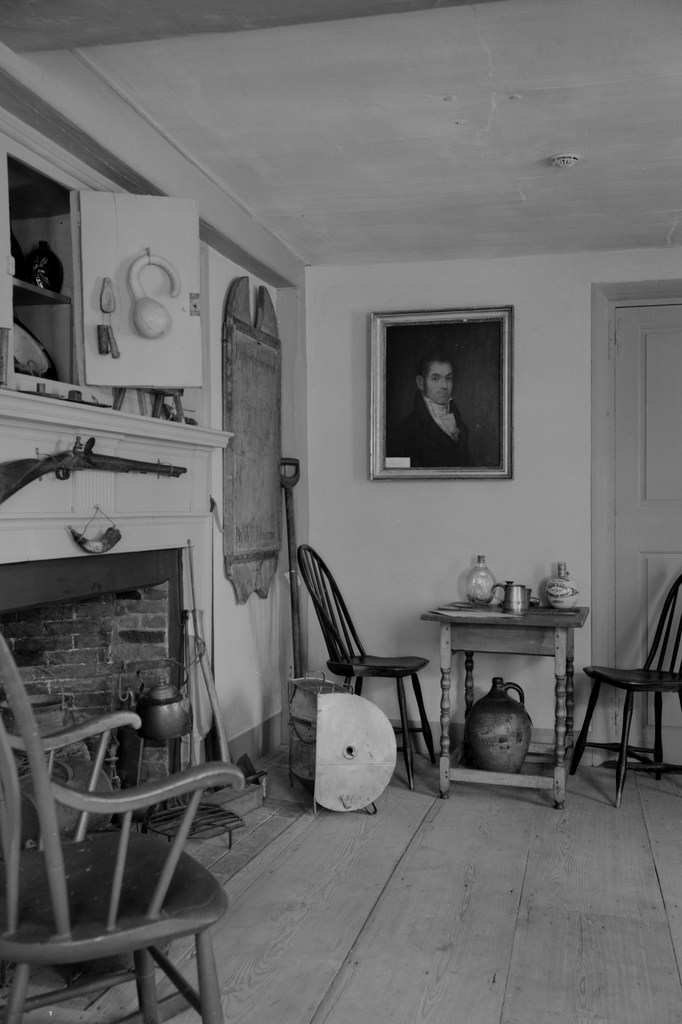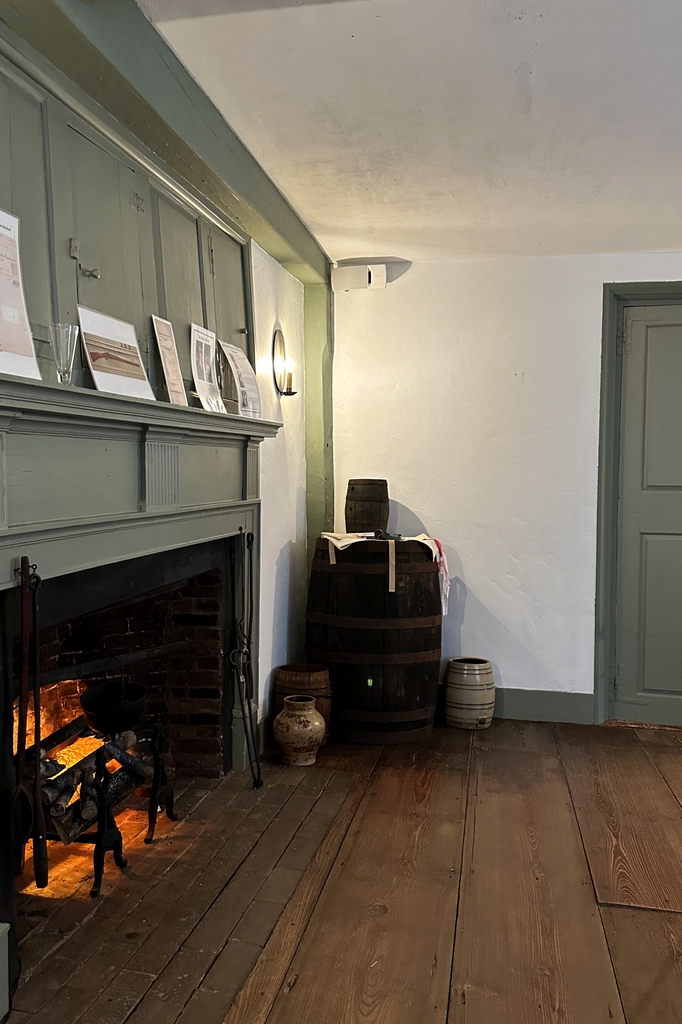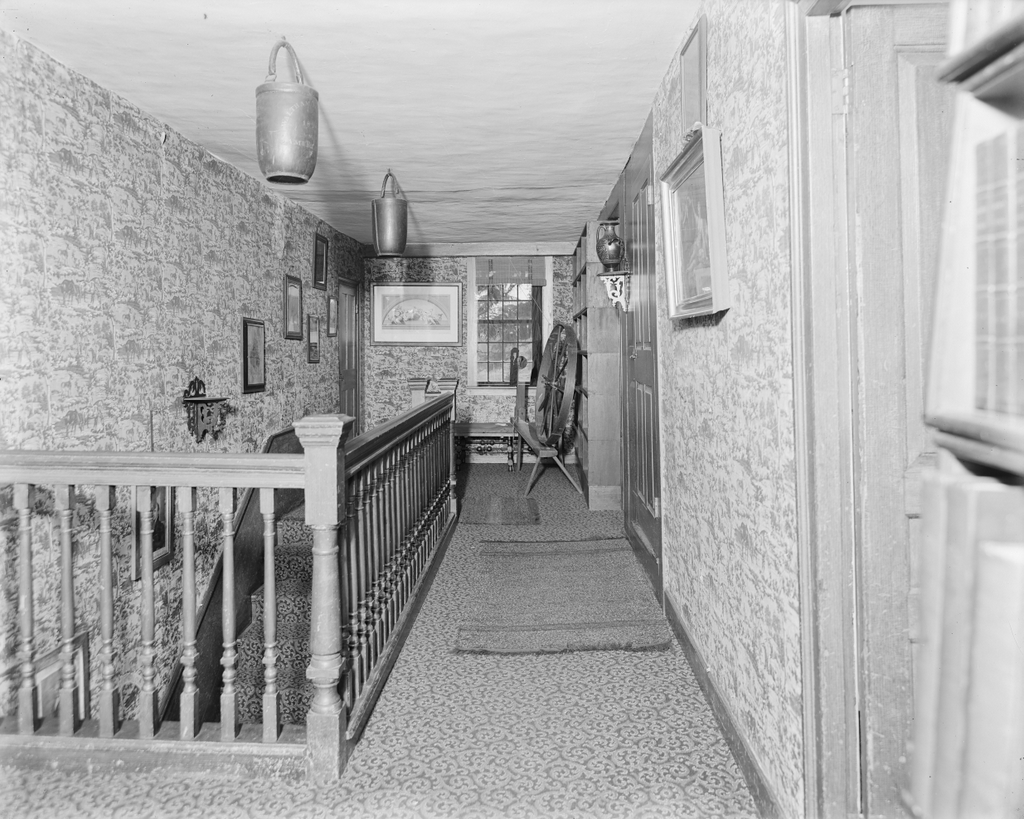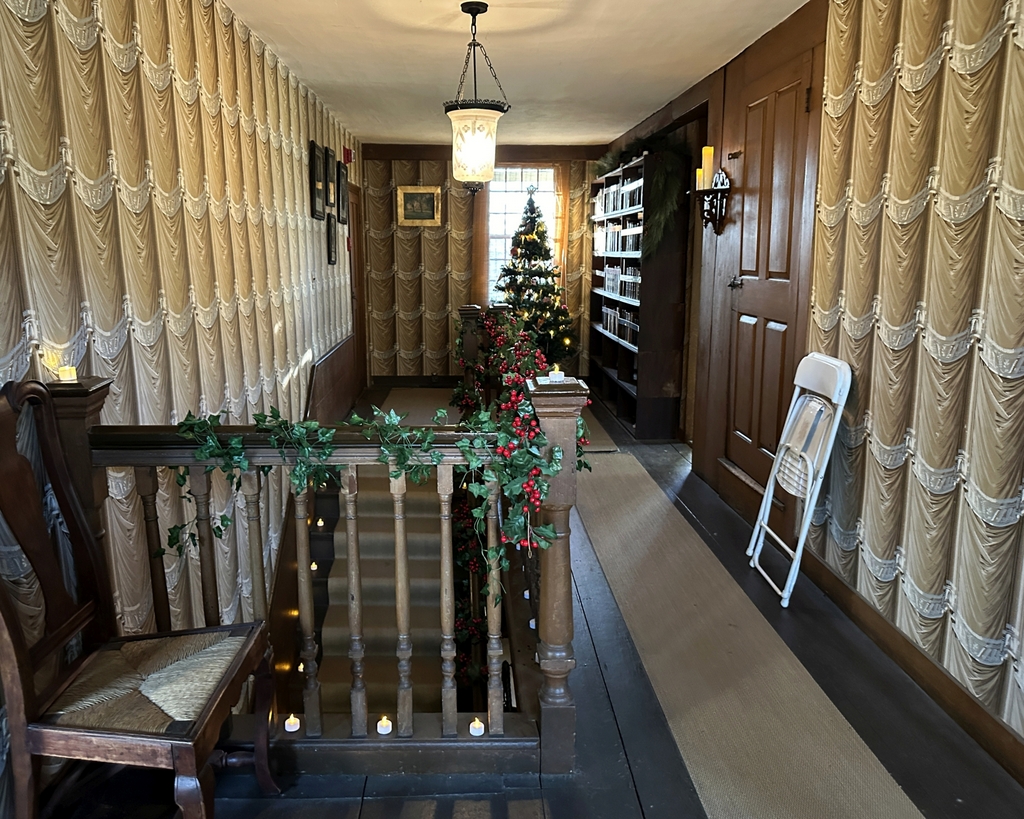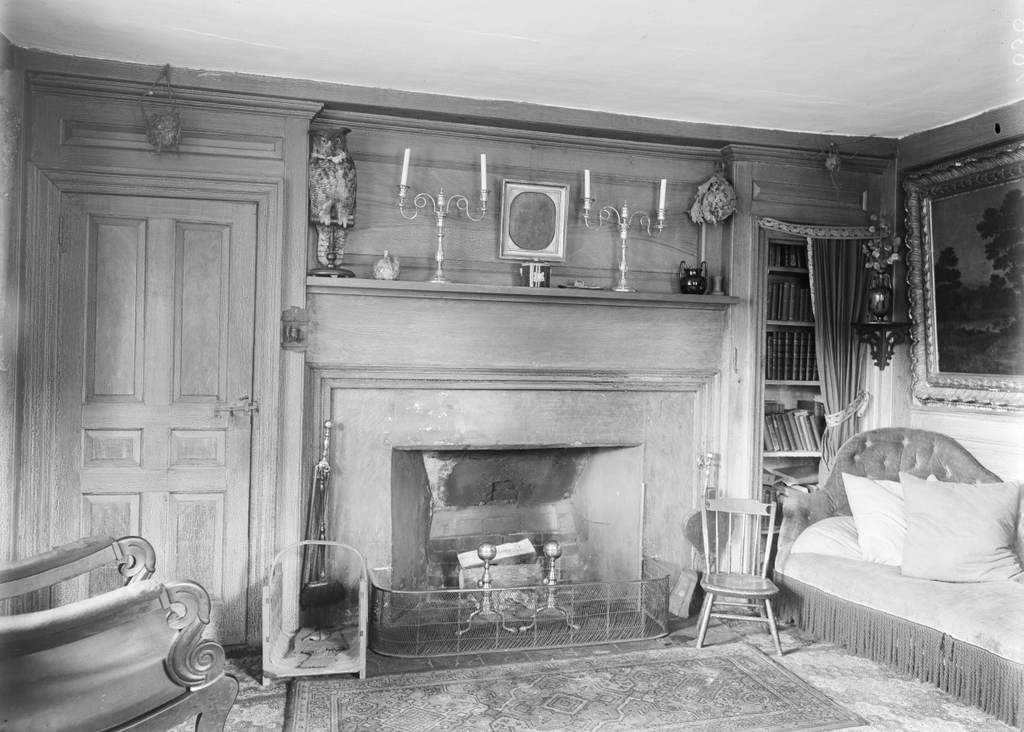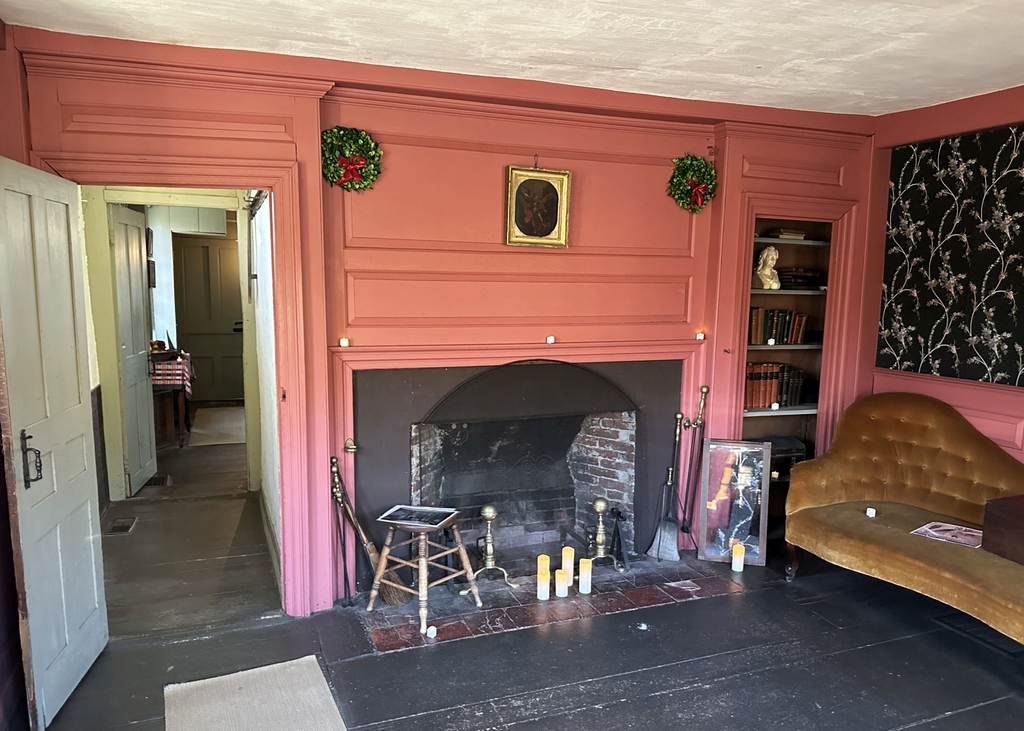The kitchen at Buckman Tavern in Lexington, Massachusetts, around 1928-1940. Image courtesy of Phillips Library, Peabody Essex Museum, Samuel Chamberlain Photograph Negatives Collection.
The scene in 2023:
These two photos show the kitchen at Buckman Tavern in Lexington. This building is perhaps the most famous landmark from the first day of the American Revolution, as it was here that the Lexington militiamen gathered in the early morning hours of April 19, 1775 prior to the arrival of the British forces from Boston. The opening shots of the war were subsequently fired outside on town common in front of the tavern, and at least one bullet pierced the front door of the building. Later in the day, as the fighting spread out along the road between Concord and Boston, two wounded British soldiers were brought to the tavern, and one of them died here.
The tavern itself was built around 1710, and for many years it was operated by John Muzzy. It was later acquired by John Buckman, who married Muzzy’s granddaughter Ruth in 1768, and he ran the tavern until his death in 1792. During the 19th century, the building was owned by Rufus Merriam and his descendants, and it was ultimately acquired by the town of Lexington in 1913.
Since then, the tavern has been preserved as a museum. The top photo shows the kitchen as it appeared during the first half of the 20th century. It is located behind the tap room, which is on the other side of the door on the left side of the photo. Today, the kitchen still looks much the same as it did more than 80 years ago, aside from some of the items being rearranged over the years. The building is still owned by the town, and it is leased to the Lexington Historical Society. Along with Munroe Tavern and the Hancock-Clarke House, it is one of three historic buildings in Lexington that are open to the public seasonally for tours.

